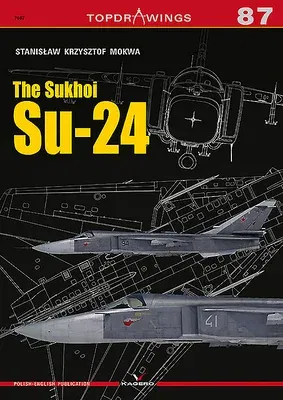Su-24 (Fencer) is a Soviet jet bomber with variable-geometry wings.
The aircraft was supposed to be a response to the American F-111, and
therefore it's structurally similar. Su-24 can operate in any weather
conditions, also at night. It was designed to carry tactical nuclear
weapons.
In the 1960s, the military command of the Soviet Union set requirements
for a new attack aircraft that would be able to operate despite strong
ant-aircraft defense of NATO troops. An aircraft was expected to fly on
a very low altitude at a very high speeds. Initially, it was based on
Su-7 and Su-15 airframes, but due to the decision to use
variable-geometry wing, it was necessary to build a completely new
structure. Variable geometry allowed to achieve high speeds while
maintaining good takeoff and landing characteristics. This is how Su-24
was born.
The first prototype was flown on July 2, 1967 (marked as T6-1), and the
second on January 17, 1970 (T6-2I). Variable-geometry wings were only
used in the second prototype. In December 1971, the first serial Su-24
was built, but due to the prolonged acceptance tests (lasting until
1974), the aircraft officially did not become operational until February
1975. Su-24 was named Fencer in the NATO code.

